Repair of gas stoves
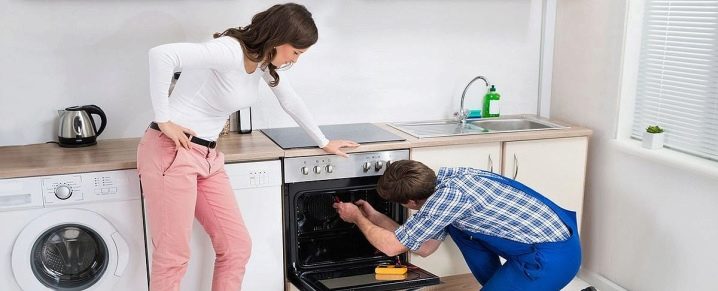
Efforts to simplify the cooking process began long before the creation of gas stoves. The first model that can be called their progenitor was created in 1825 in England. The appearance of gas stoves in houses is associated with the general gasification of cities and settlements. For this reason, they appeared in Russia only under Soviet rule. Gas stoves are complex appliances. Violations in their use are associated with a threat to life and health. Disruptions in the operation of the plates are not uncommon.
If the consumer has a suspicion of serious damage, then it is worth contacting the master. But many malfunctions do not pose serious threats, so the stove can be repaired by yourself.
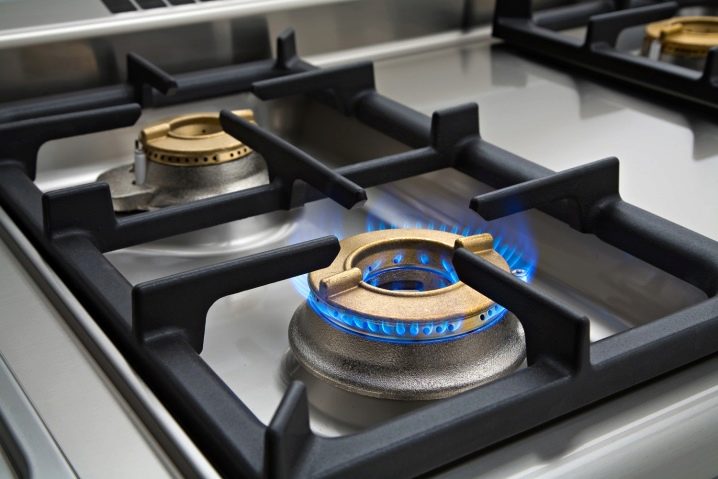
Major malfunctions and their elimination
Gas stops burning
Modern stoves are equipped with a gas control system, which reduces the likelihood of gas leaks. Gas control includes a thermodynamic sensor, an electromagnet and a thermocouple. The general principle of operation is as follows: when you press the external handle of the automatic ignition, the opening valve is fixed on the electromagnet. The valve in the pressed position prevents the special gas passage to the burners from closing. When interacting with a spark from a spark plug, the gas starts to burn.
You need to wait a little for the thermocouple to warm up, and the thermodynamic sensor starts working in standard mode. If the thermocouple has not warmed up enough, and there is no combustion, then the sensor closes the valve to prevent gas leakage.


The reason for the termination of the flow of gas to the burner may be a malfunction in the automatic ignition or damage to the thermocouple. The first step is to clean the thermocouple. To do this, you need to use a rough cloth or sandpaper-zero. If the problem persists, then you should inspect the automatic ignition system, which is located on the front panel. It is necessary to thoroughly clean it of external contamination, remove the regulator and inspect the spring and other visible parts (depending on the model). A broken spring or any other damage could be the cause of the malfunction.




Also, the cause of the malfunction may be a short circuit or contamination of the spark plug.
To remedy the situation, it is necessary to turn off the gas supply. Then, using the appropriate tools, you need to lift the top panel of the stove - under it there is a general electric ignition system, which includes four elements:
- contact wires led to the attachment points of external gas supply regulators;
- power supply system;
- ignition plugs (one for each burner);
- high voltage wires.

During the cooking process, water and other liquids can get underneath the top panel and accumulate there. Liquids are good conductors of electricity, and therefore, even a small drop between the high voltage wires and the base panel can lead to short circuits. To resolve this, the base panel must be gently rinsed and dried. In addition, a heavily soiled spark plug can be the cause of the malfunction. To repair it, you will need to perform the following manipulations:
- disconnect the contact wire;
- using a screwdriver, remove the retaining spring and candle;
- clean and dry the candle;
- install it in place.



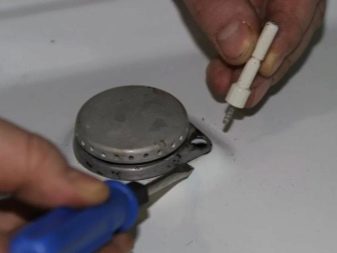
Uneven flame
The cause of the malfunction is a poorly regulated air supply.As a result, the flame can smoke, fluctuate greatly and even go out. Before starting repairs, you need to pay attention to the fact that with an excess of air, the flame has a bright blue color, and if there is a lack, it is orange. First of all, you need to turn off the gas supply and remove the top panel. Then it is necessary to determine which burner needs repair, and carefully inspect all the systems that regulate it.


To correct the air supply, the air set screw must be loosened. It blocks the air regulation plate. After correcting the plate, you need to slightly reduce the air supply. Then assemble all systems in reverse order, connect the gas and check the operation. Increase the amount of air if necessary.
Ignition does not occur immediately
Many are familiar with such a problem when it is impossible to light the stove, although the spark plug clicks regularly, cutting out sparks. There may be several reasons for this phenomenon:
- Burner "flooded" during cooking;
- feature of the model;
- violations in the electric ignition system.



If for some reason the consumer "flooded" the burner and it does not light up, then you just need to dry it. To do this, you need to try to light it several times. Gas will flow, but immediately go out. After 3-4 times the burner will burn out and light up. If this method does not help, then it is necessary to turn off the gas supply and disassemble the burner and the top panel. Then you need to rinse and dry them, then collect them back and connect the gas.
Another reason may lie in the structural features of the slab. Manufacturers, in order to increase the safety of the operation of the plates, increase the heating time of the thermocouple. The thermocouple may take 40 seconds to warm up. If it does not have time to heat up, then the electrodynamic sensor will turn off the gas supply.


There are also possible violations in the ignition system, which includes a gas supply valve, a thermodynamic sensor, a spark plug, and a thermocouple. The thermodynamic sensor works on a two-wire basis. Broken or loose wire can cause damage. The sensor regulates the operation of the valve on the gas supply channel. Please note that this equipment is not intended to be repaired by yourself. The thermocouple and candle repair is described above. Additionally, it is worth noting that you cannot turn off the gas control in any way.

Noise and foreign smell
It starts to smell like gas when gas leaks and the gas supply system is depressurized. Use soapy water to identify damage. To do this, it is necessary to apply a soap solution to all joints of pipes and hoses, as well as to all joints outside and inside the slab. Air bubbles will appear at the depressurized joint. You also need to determine the type of connection at the joint: this is a threaded connection or with a gasket.


In the case of a threaded connection, it is necessary to clean all parts of the old sealant and inspect them for integrity. If there is damage, then the part must be replaced. If there are none, then you need to apply a new sealant and wind it up with a new winding. If a connection with the gasket was found, then you need to disassemble the entire assembly, install a new gasket and assemble it. After that, you should re-check the operation of the entire plate.

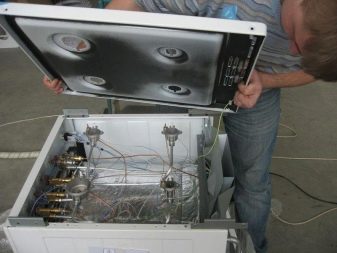
If all the necessary has been done, and the smell does not go away, then it is recommended to contact the master. Perhaps the point is the wrong connection of the stove. As for the noise, it arises from the unregulated supply of gas and air. In slabs of a newer design, the dividers will have to be changed, and in older samples, the air dampers must be replaced.
Difficulty turning on
The reason for this difficulty may be a short circuit of the wiring to the main panel, which is located under the top panel of the slab.In this case, the consumer can be shocked when it comes into contact with the stove, and automatic ignition starts to work when the burner control handle is turned off (released) or does not turn on at all. Initial repair consists of the following steps:
- it is necessary to turn off the gas and remove the top panel;
- clean all high-voltage wires from contamination.




If the unit is in good working order, then the actions performed will be enough to repair it. It is also possible that the knob regulating the automatic ignition is dirty. In this case, you need to remove its case from the front panel and thoroughly clean it and the spring from dirt.


Handles turn tight
In order to repair them with your own hands, you need to understand that the mechanism consists of an external part (the one on the front panel) and an internal part (it is located on the gas tap for the burners). If the stove was purchased recently, then it consists of two elements. If the plate is rather old, then the mechanism is monolithic. You need to start repairing by inspecting the outer housing of the handle and the spring under it. Usually, the cause of the malfunction is dirt, as well as frozen fat. The necessary measures are described above.


Another problem can arise with the internal gas cock. Handles are put on its stem. It is made of brass, which tends to oxidize. In addition, when gas is used, plaque builds up, which makes turns difficult. Perhaps the grease has dried out, then you need to remove the old one and apply a new one.


How to disassemble the stove?
Although there are many manufacturers of gas stoves, the structure of all models is approximately the same. Modern gas stoves include several separate parts:
- electric - lighting, grill installation and electric ignition;
- gas - burners, burners and shut-off valves.


In addition to gas, the stoves are connected to electricity. This is done so that the glow plug will work, as well as the oven service systems and the built-in grill. The oven functions are controlled from the front panel. More modern models are equipped with touch panels, on older models control is via buttons and additional knobs.
In the standard set of a modern stove in the middle price segment, it is possible to set the cooking time, temperature, clarify which systems need to be connected, change ventilation modes, set a delay for cooking and heating.


Two types of cabinet heating can be distinguished:
- with two heating modes - upper (grill mode) and lower (carried out by the main burner);
- with two modes, but with the addition of forced air circulation.

The oven makes it possible to bake, stew, fry and steam the dish. During cooking, there should be no unnecessary items inside the oven, such as pans that are not used for cooking.
It is not difficult to disassemble the stove at home. To do this, you will need to follow several sequential steps.
- First of all, it is necessary to turn off the gas and disconnect the electrical wire.
- Then you need to remove the handles and unscrew all the screws holding the surfaces.
- The dashboard is covered by the rear panel. You need to remove it by carefully unscrewing all the screws.
- The same manipulations must be done with the front panel. It should be noted that the front panel screws can be hidden by means of decorative covers that can be removed with a screwdriver.
- Then you need to free the stove from the grates, burners and the top panel.
- The oven door can be removed by pulling it up from the rods. The hinges can be locked. It is worth paying attention to this and unblocking them.
- The hood from the oven light bulb can also be removed by unscrewing the screws.
- If the lamps in the oven itself are damaged, then it is necessary to unscrew the panels (they have grooves for adjusting the height of the inserted baking sheets) and change the bulbs to others of the same type and power.




How to lubricate it?
The need to change the lubricant is one of the most common reasons for parsing plates. Before proceeding, you need to pay attention to the fact that most often it is necessary to lubricate the gas taps at the points of contact with the handle body. Gas valves and bronze parts are lubricated with special sealants resistant to high temperatures, for example, "EXPERTOILOM". If there is no such lubricant, then technical petroleum jelly will do.
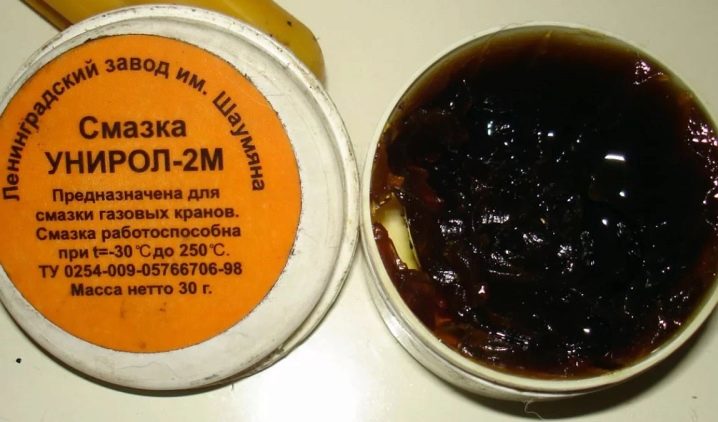
To seal the fittings of pipelines through which gas flows, use MRTU 12N No. 97-64. This substance contains water and castor oil. On fixed joints, to reduce interaction with other parts, sealing lubricants with a low coefficient of interaction with the substance in the pipes and the external environment are used.
When lubricating the creaking oven door, it must be borne in mind that when heated, a rather high temperature forms in it, and contact with food is also possible. Therefore, the grease must be food grade and resistant to high temperatures. You can use the folk method and use a lead. However, Total has a whole line of specialty lubricants for cooking appliances. They have properties such as heat resistance, food tolerance, environmental friendliness and water resistance.

Safety engineering
For prevention, you can use the following recommendations:
- turn off the gas, open the window and check the joints for gas leaks;
- check the reliability of the grounding of the stove;
- have damp gauze on hand;
- never use flammable objects (cigarettes, lighters, matches).

Many problems can be prevented by observing safety measures and during the direct use of the stove. You cannot do the following:
- leave stoves with lit burners unattended;
- give access to the stove to irresponsible children;
- blow out the flame without blocking the gas supply;
- place cookware directly on a burner that does not use the grill;
- knock on burners, turn taps;
- pour liquids over the doors of the oven while it is in operation;
- leave flammable objects near the stove;
- pour water on the working burners;
- operation should only be carried out with sufficient air circulation.

If there is a strong smell of gas, then:
- no need to try to find the leak with fire;
- with a strong gas leak, noise is heard;
- you need to open windows and doors;
- turn off the gas;
- do not use electrical appliances;
- if at the time of the leak one of the devices was connected to the power supply, then you need to leave everything as it is;
- it is necessary to leave the room;
- call the emergency service.

It is also worth noting that unauthorized interference with the operation of gas equipment by persons who do not have sufficient qualifications and powers is prosecuted by law, and self-disassembly of the stove can provoke an accident.
For information on how to repair a gas stove at home, see the next video.













The comment was sent successfully.